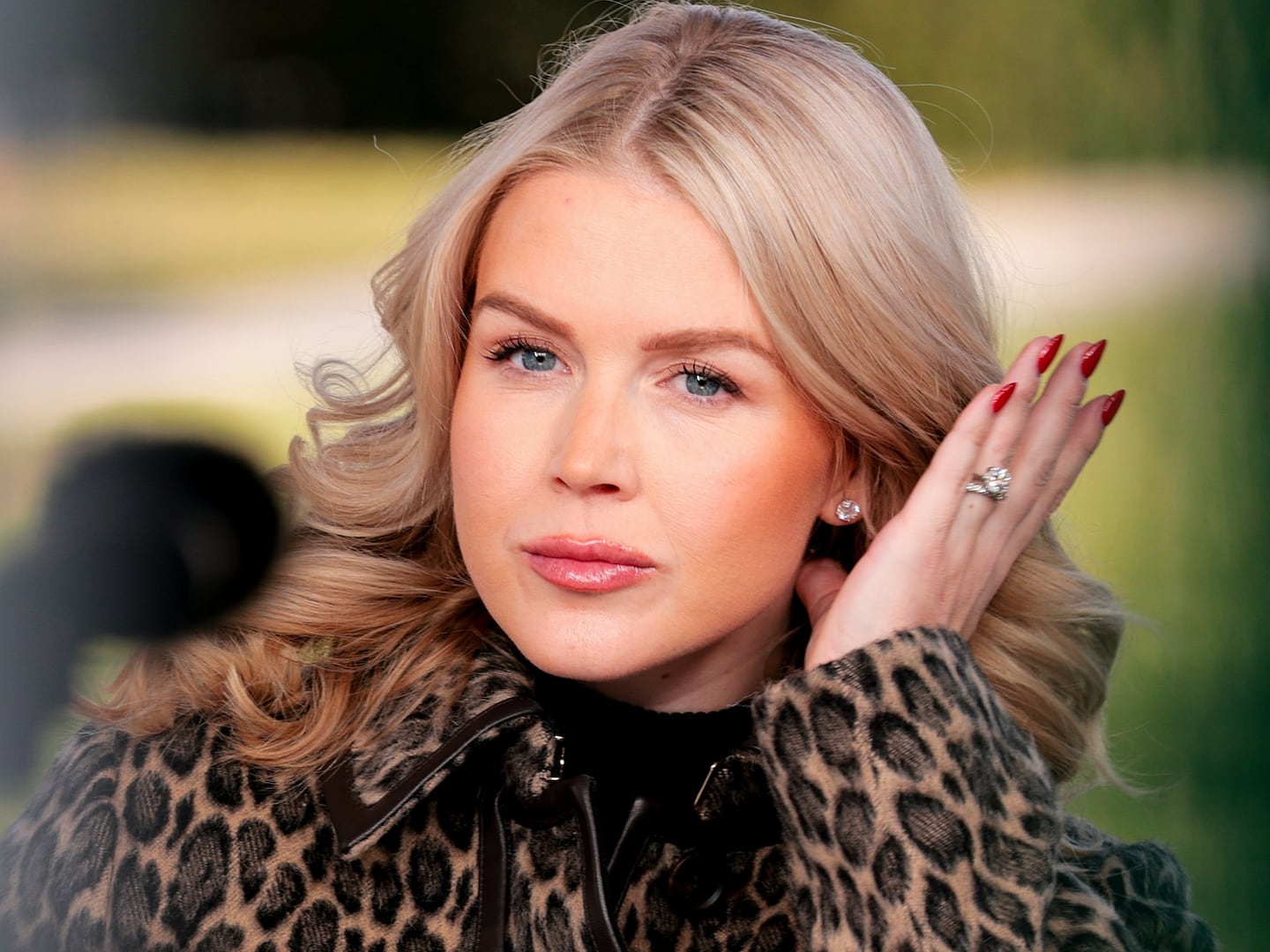
A sari is a deceptively simple garment. It’s a rectangular-shaped piece of cloth six yards long. That’s it. No zippers, no buttons, no hooks, no straps. You wrap the fabric around yourself once, tuck the top into your half-slip, fold a few pleats, and tuck them into the same slip. Pretty straightforward, right? Well, actually, no. It’s not that simple, at least, for me or the women of my generation.
For my mother, though, it seemed a breeze, as natural as pulling on a T-shirt over jeans. Her hands moved with lightning speed as she wrapped herself in the elegant sheath.
As we dressed my mother for her last journey, the reality dawned on me. She was the brave, pioneering one.
She wore saris all the time—at home, to work, to parties. She could even drive in one with ease! The only thing that changed was the fabric. My favorite for her, and the most elegant, was chiffon. There was a way that it caressed her body and the pleats hung just so, brushing the tops of her feet like a soft whisper. They were always perfect.
For her generation, every sari told a story. When women got married, the number and kind of saris her in-laws gave her signaled her worth in their eyes. That’s a heavy burden for a six-yard rectangle of fabric.
To me, the burden of a sari became almost too much to bear when my mother died five years ago.
It’s a ritual, we were told. The women of the family have to dress her for the funeral. Really? Well, we wouldn’t actually have to dress her; the funeral home folks would be there to do it, mostly. Our presence was more symbolic. We needed to be there—my sisters, aunts, sister-in-law, essentially the same group that gathers when a bride is getting ready for her wedding. And in our Indian family, at least, the custom was that when a wife died before her husband, she should be dressed like a new bride for the funeral.

But which sari would she wear? After almost five decades, there was no wedding sari of hers locked away in a suitcase. There aren’t even any pictures of my parents’ wedding. We ultimately settled on a red chiffon sari with little islands of embroidery that exploded across its luxurious six yards, red being the auspicious color for a bride to wear at a wedding. We chose some jewelry, nothing too ostentatious. Something she would like. Something Dad was happy with, since he had to be OK with everything.
For Hindus, who believe in reincarnation, my mother was embarking on a journey. She was devout and believed there was something else afterward. We were dressing her for a journey, her final one. It was a voyage that would remain unfamiliar to me, as had all her others, from childhood through womanhood, and it was something I couldn’t begin to comprehend.
In the wrenching creation of modern India, when colonial India was partitioned into India and Pakistan, she was a little girl—and one of millions who fled what is now Pakistan. She was later married to a stranger, just shy of her 18th birthday. Five years later, she moved to London, with three girls in tow. It was a gray, bleak, decidedly pre-multicultural 1960s London. That’s quite a ride already. It was close to five years after she came to London before she got to see her own mother. How did she survive that?

Almost in defiance of the first rule of assimilation—dress like the locals—my mother always wore a sari. In family pictures from the playground, we look a little “fresh off the boat,” but there’s Mom in her sari. Posing at the Eiffel Tower with her très chic cat’s eyes sunglasses, she’s wearing a sari. She might be wearing shoes, socks, and a heavy overcoat, but always a sari. And this was in a pre-multicultural Europe where a sari or hijab might have been looked on as something truly exotic and otherworldly. This was an England where chicken tikka masala was not yet the most popular dish in the country! But it was her identity, it’s what she knew, and it’s what she wore. Eventually her wardrobe broadened to pants and tops, though never ever a skirt or dress.
But really, in my mind, she was defined by her saris. It’s like she packed for this great immigrant journey with the sari as the equivalent of her “little black dress,” a classic she could come back to again and again, confident in her own skin, confident in her clothes marking part of her identity. But I didn’t really think about the braveness of that, of wearing a sari in 1960s London. Actually, I never thought of my mother as brave. That was an accolade more suited for me and the women of my generation, the immigrants’ children who broke the barriers.
My own journey has been blessed. I had the benefit of a stellar education. I’m successful in my career (I’m the executive producer of NPR’s Morning Edition) by any objective measure. I’ve been married for 22 years. I have two daughters for whom everything is an option. Aren’t I the very epitome of the success that women strived for? I’m so courageous, independent, brave, pioneering—an Indian girl who married a white American and moved to the U.S. from England, far away from my family.
But as we dressed my mother for her last journey, the reality dawned on me. She was the brave, pioneering one.
When I left my home and my country, 1980s England, with my new husband—one I chose—the sting of parting was soothed by the comforts of the jet age. We would think nothing of getting on a plane to see my mother. The idea that I would not see or speak to her for years was as incomprehensible to me as the idea of her seeing her own mother on a whim must have been to her. Without the knowledge that she was just a phone call or a plane ride away, would I have been brave enough to embark on my own journey? The multiple trans-Atlantic phone calls from the kitchen as I painstakingly tried to re-create her wonderful culinary concoctions; the reflexive telephone call about something I had to tell Mom about immediately: my new job, my new house, I’m pregnant.
The essential bravery of the many women like her who make up the Indian diaspora, the millions of our mothers who moved to the West, is something that never occurred to me until that moment—the moment when we had to lift her to wrap the sari around her. That legion of women who followed their stranger husbands to a strange country far away from their mothers—they were the real pioneers. Theirs is the journey that cleared the path for me and the millions of successful, educated, hyphenated-Indian women like me.
Women like my mother began the journey, but her road had come to an end. It was the least that we could do, as her daughters, to dress her for another journey she was beginning on her own. How could we? How could we dress our mother, in a sari, no less? We, who needed her to help us with our saris, the six yards of unruly fabric that we would try and wrap around us. Mom was the one to help us with that. Now here we were, trying to dress her.
We had to lift her up, her stiff body lying on a metal slab. How unnatural and abnormal. It was an act I resented in some way, and still do. Really, we shouldn’t have to dress our mother. As my sister remarked afterward, “Putting a sari on a dead body is really quite an onerous task.” Trying to dress her with dignity was heartbreaking. Her hands, arms, and feet were damaged from an immune deficiency that ravaged her skin. Her body was a dead weight. But this was where the beauty of a sari and its simplicity, its open canvas almost, helped. We were able to fold and drape in a way to cover the most damaged parts, the pullou draped across her front, covering her arms, the full length of the sari allowed us to cover her feet. The abundance of the fabric allowed us to cover her but retain the beauty and elegance of the garment.
This was our responsibility, the women who came after her, to make sure that she looked her best as she blazed the trail once more, on a journey that like so many of her others she embarked on alone. The least we could do was see that she was dressed for the part. And when she was brought home one last time for a ritual ceremony before her cremation, in a white silk-lined casket, she was ready. “She looks just like a bride,” whispered my 6-year-old daughter. And she did.
Madhulika Sikka is executive producer of NPR’s Morning Edition. She also has worked as a producer for ABC News’ Nightline, World Monitor Television, CBS News, and NBC News. She has received four Emmys, two duPont awards, a Barone award, two Peabodys, an NABJ award, and three SAJA Awards. She also is recipient of the India Abroad Publisher’s Award for Special Excellence.






